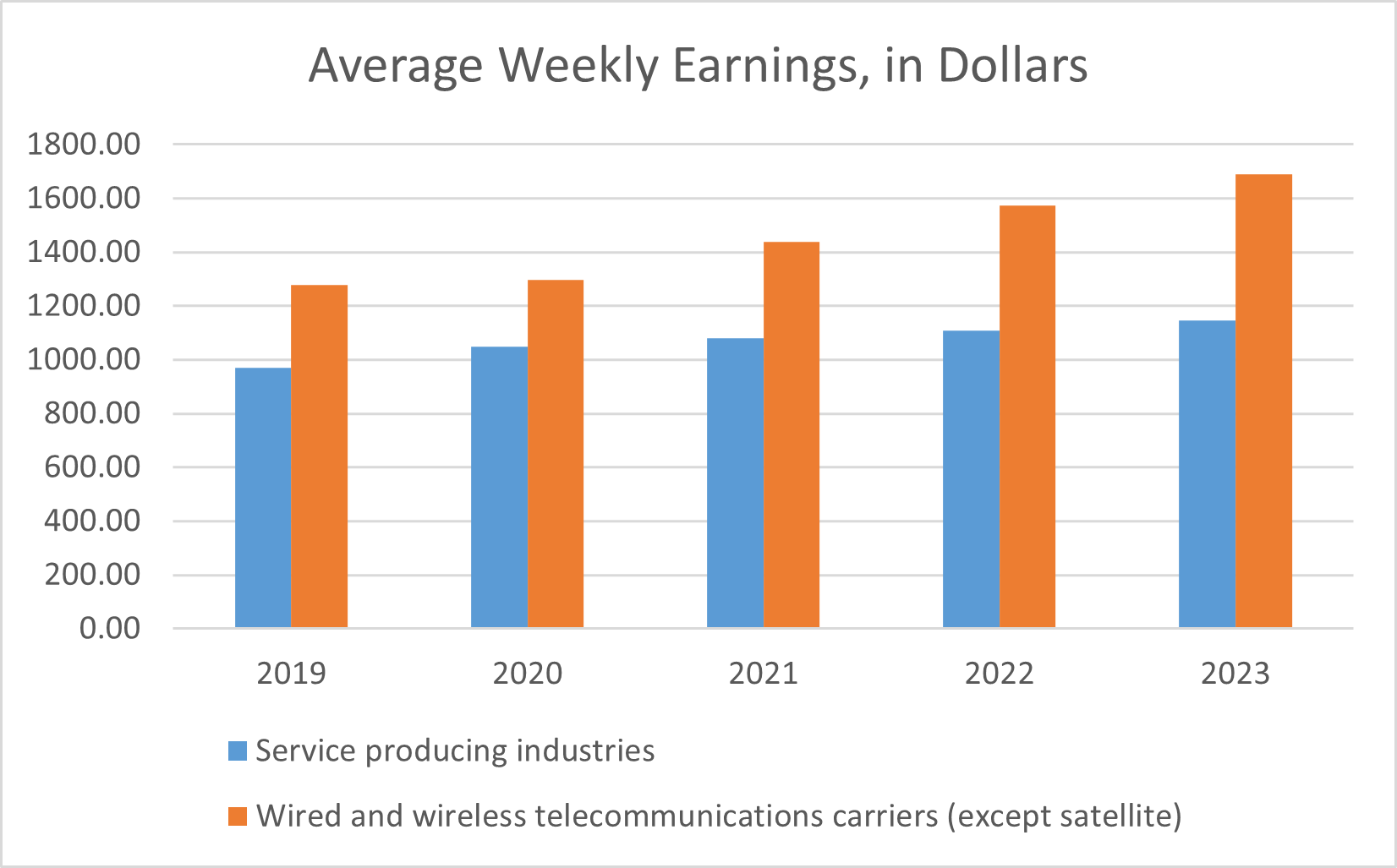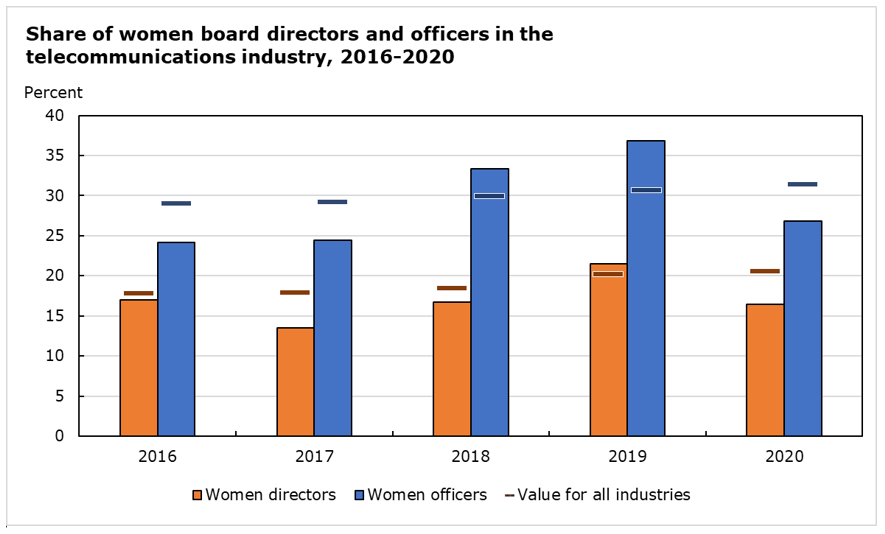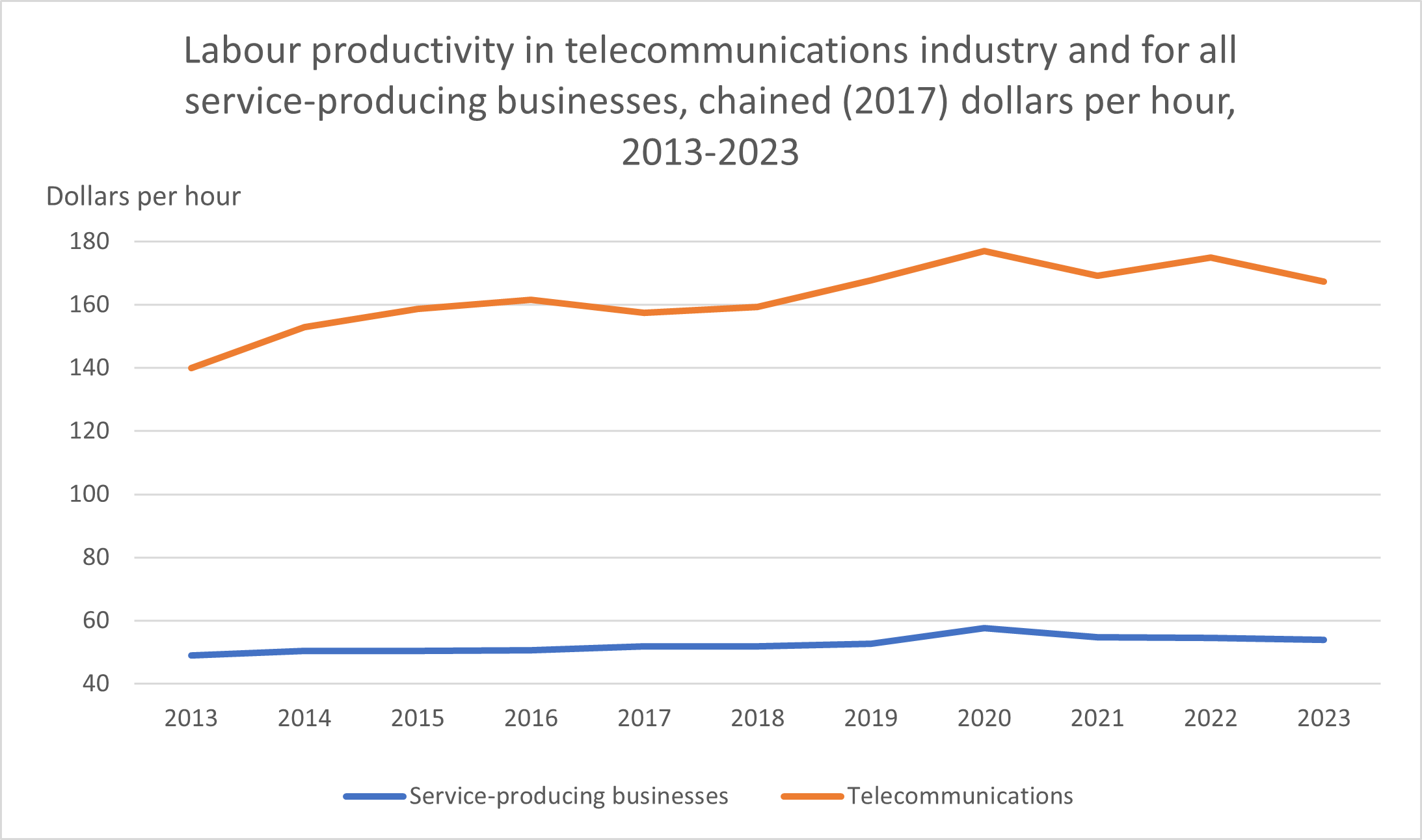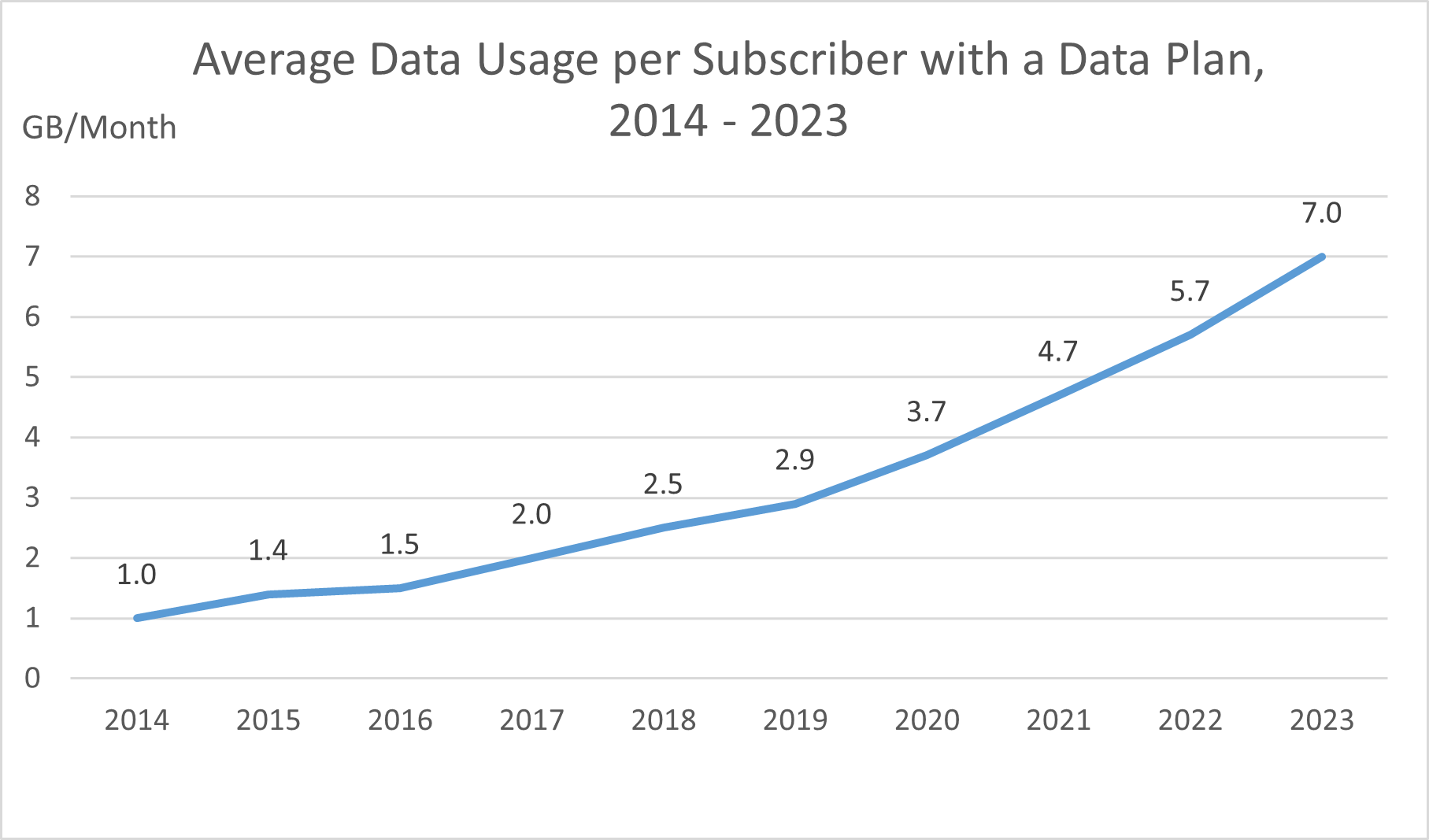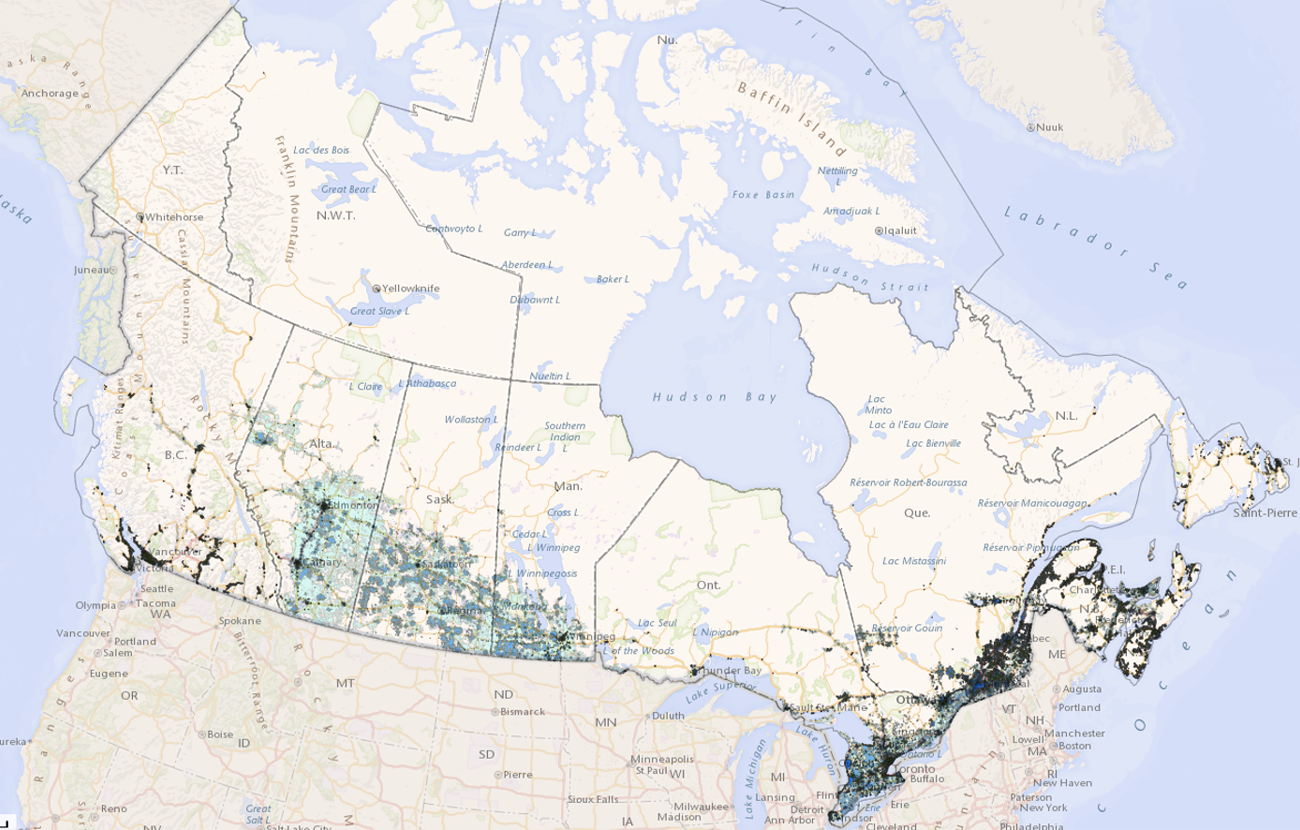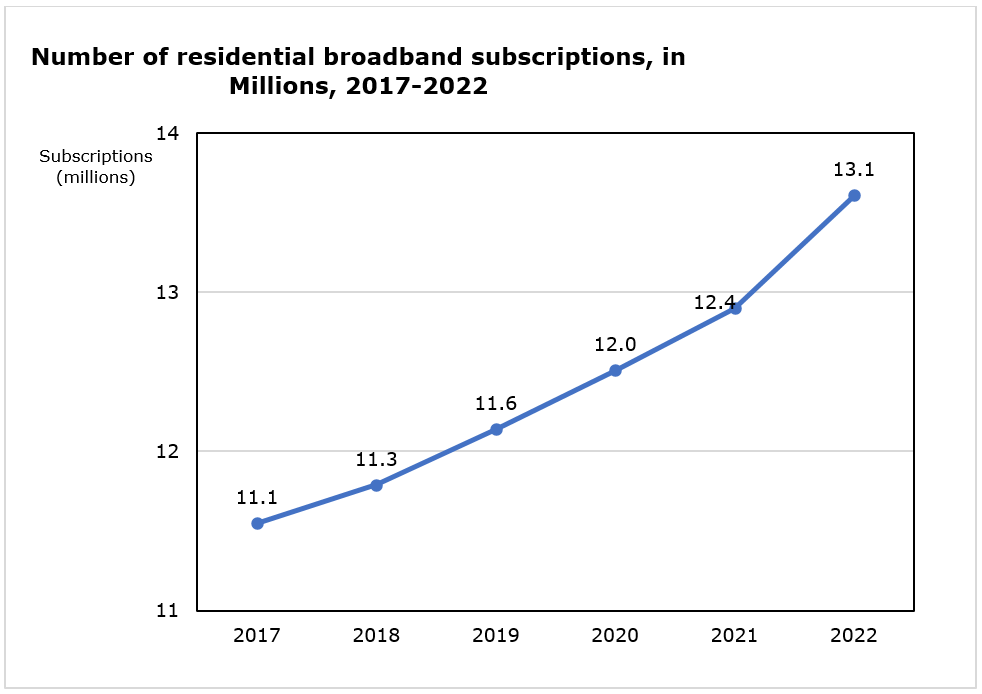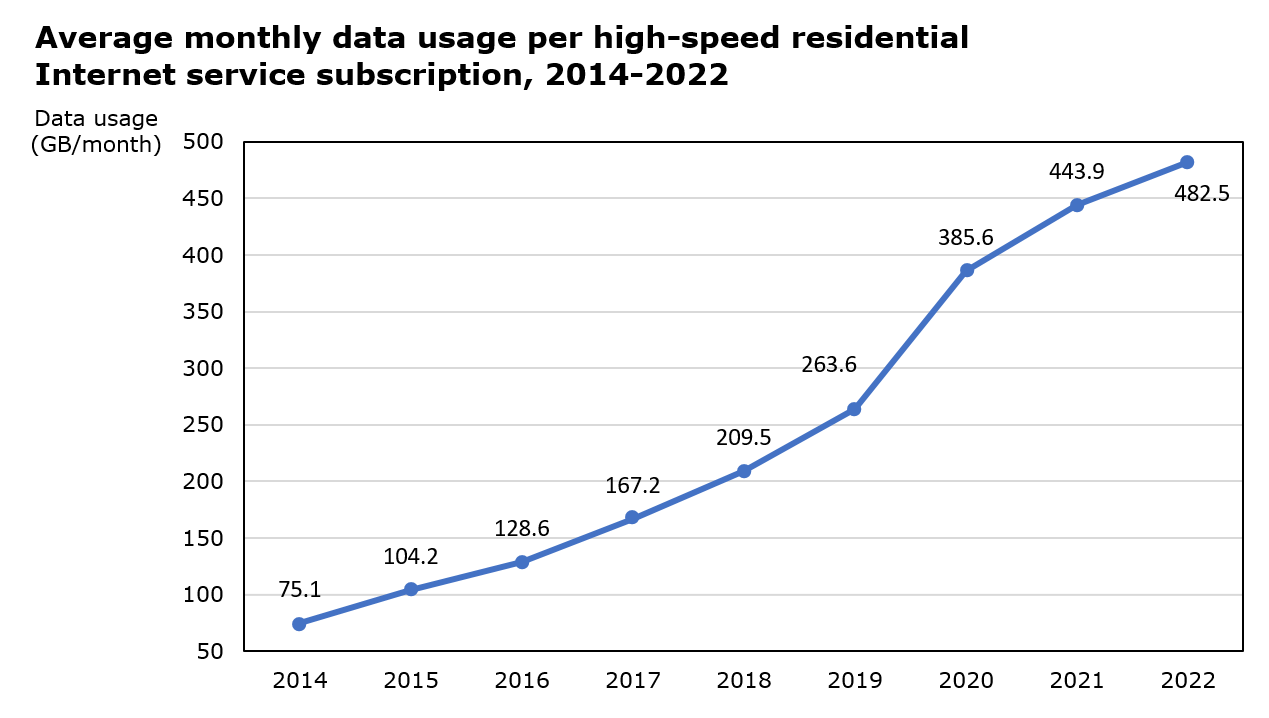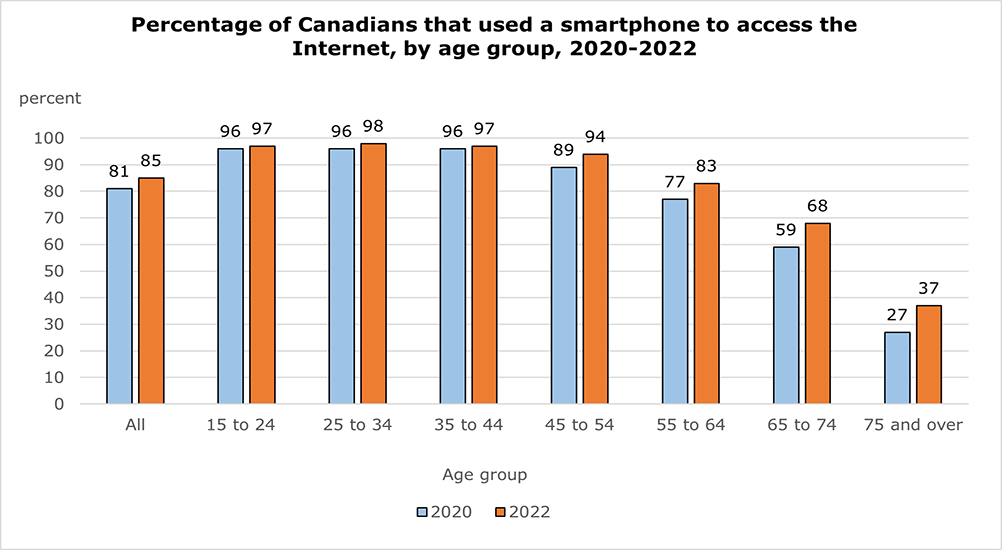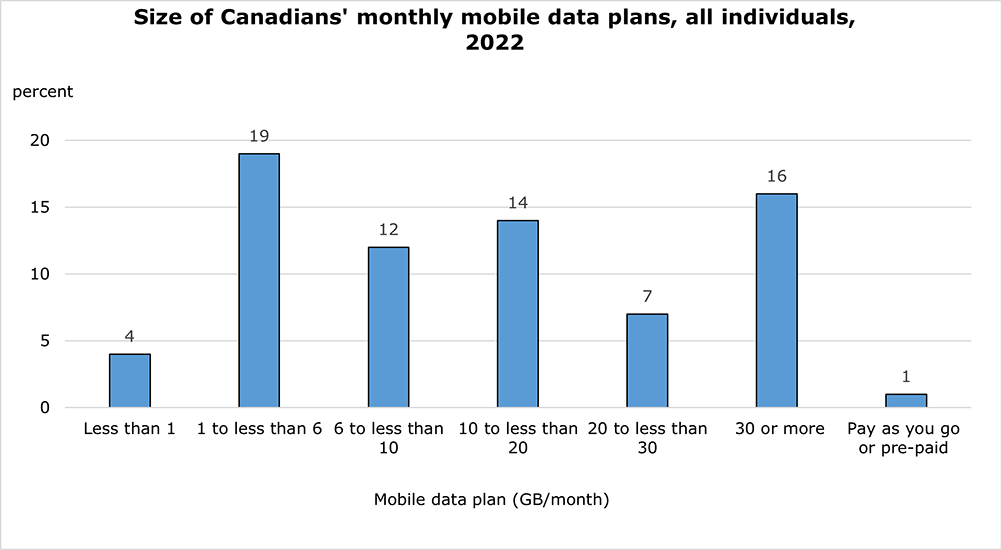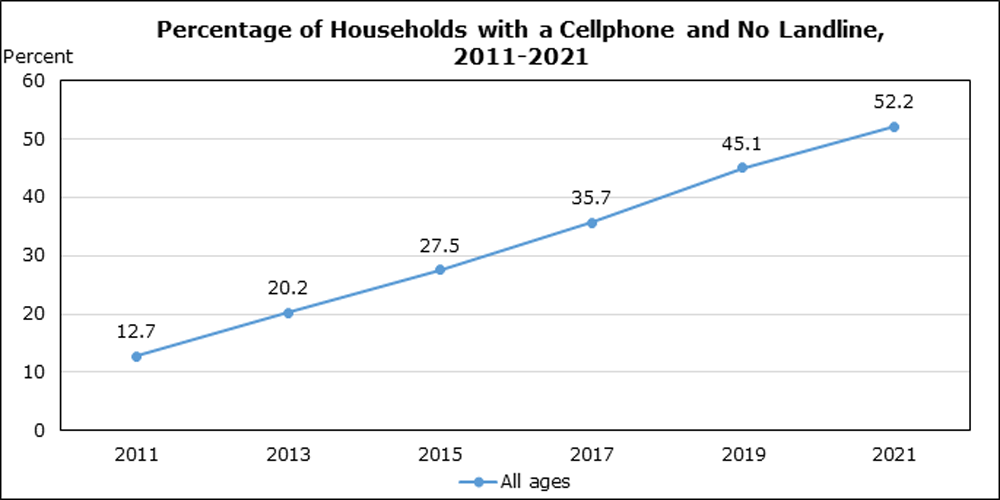Why do we conduct this survey?
This survey is conducted by Statistics Canada in order to collect the necessary information to support the Integrated Business Statistics Program (IBSP). This program combines various survey and administrative data to develop comprehensive measures of the Canadian economy.
The statistical information from the IBSP serves many purposes, including:
- obtaining information on the supply of and/or demand for energy in Canada
- enabling governmental agencies to fulfill their regulatory responsibilities in regards to public utilities
- enabling all levels of government to establish informed policies in the energy area
- assisting the business community in the corporate decision-making process.
Your information may also be used by Statistics Canada for other statistical and research purposes.
Your participation in this survey is required under the authority of the Statistics Act.
Other important information
Authorization to collect this information
Data are collected under the authority of the Statistics Act, Revised Statutes of Canada, 1985, Chapter S-19.
Confidentiality
By law, Statistics Canada is prohibited from releasing any information it collects that could identify any person, business, or organization, unless consent has been given by the respondent, or as permitted by the Statistics Act. Statistics Canada will use the information from this survey for statistical purposes only.
Record linkages
To enhance the data from this survey and to reduce the reporting burden, Statistics Canada may combine the acquired data with information from other surveys or from administrative sources.
Data-sharing agreements
To reduce respondent burden, Statistics Canada has entered into data-sharing agreements with provincial and territorial statistical agencies and other government organizations, which have agreed to keep the data confidential and use them only for statistical purposes. Statistics Canada will only share data from this survey with those organizations that have demonstrated a requirement to use the data.
Section 11 of the Statistics Act provides for the sharing of information with provincial and territorial statistical agencies that meet certain conditions. These agencies must have the legislative authority to collect the same information, on a mandatory basis, and the legislation must provide substantially the same provisions for confidentiality and penalties for disclosure of confidential information as the Statistics Act. Because these agencies have the legal authority to compel businesses to provide the same information, consent is not requested and businesses may not object to the sharing of the data.
For this survey, there are Section 11 agreements with the provincial and territorial statistical agencies of Newfoundland and Labrador, Nova Scotia, New Brunswick, Québec, Ontario, Manitoba, Saskatchewan, Alberta, British Columbia and the Yukon. The shared data will be limited to information pertaining to business establishments located within the jurisdiction of the respective province or territory.
Section 12 of the Statistics Act provides for the sharing of information with federal, provincial or territorial government organizations.
Under Section 12, you may refuse to share your information with any of these organizations by writing a letter of objection to the Chief Statistician, specifying the organizations with which you do not want Statistics Canada to share your data and mailing it to the following address:
Chief Statistician of Canada
Statistics Canada
Attention of Director, Enterprise Statistics Division
150 Tunney's Pasture Driveway
Ottawa, Ontario
K1A 0T6
You may also contact us by email at statcan.esdhelpdesk-dsebureaudedepannage.statcan@statcan.gc.ca or by fax at 613-951-6583.
For this survey, there are Section 12 agreements with the statistical agencies of Prince Edward Island, the Northwest Territories and Nunavut as well as with the Newfoundland and Labrador Department of Natural Resources, the New Brunswick Department of Environment and Local Government, the Quebec Forest Industry Council, the ministère des Finances du Québec, the ministère de l’Environnement et de la Lutte contre les changements climatiques du Québec, the ministère de l’Énergie et des Ressources naturelles du Québec, Transition énergétique Québec, the Manitoba Department of Growth, Enterprise and Trade, Alberta Energy, the British Columbia Ministry of Energy, Mines and Petroleum Resources, the Canada Energy Regulator, Natural Resources Canada and Environment and Climate Change Canada.
For agreements with provincial and territorial government organizations, the shared data will be limited to information pertaining to business establishments located within the jurisdiction of the respective province or territory.
Business or organization and contact information
1. Please verify or provide the business or organization's legal and operating name and correct where needed.
Note: Legal name modifications should only be done to correct a spelling error or typo.
Legal Name
The legal name is one recognized by law, thus it is the name liable for pursuit or for debts incurred by the business or organization. In the case of a corporation, it is the legal name as fixed by its charter or the statute by which the corporation was created.
Modifications to the legal name should only be done to correct a spelling error or typo.
To indicate a legal name of another legal entity you should instead indicate it in question 3 by selecting 'Not currently operational' and then choosing the applicable reason and providing the legal name of this other entity along with any other requested information.
Operating Name
The operating name is a name the business or organization is commonly known as if different from its legal name. The operating name is synonymous with trade name.
- Legal name
- Operating name (if applicable)
2. Please verify or provide the contact information of the designated business or organization contact person for this questionnaire and correct where needed.
Note: The designated contact person is the person who should receive this questionnaire. The designated contact person may not always be the one who actually completes the questionnaire.
- First name
- Last name
- Title
- Preferred language of communication
- Mailing address (number and street)
- City
- Province, territory or state
- Postal code or ZIP code
- Country
- Email address
- Telephone number (including area code)
- Extension number (if applicable)
The maximum number of characters is 5.
- Fax number (including area code)
3. Please verify or provide the current operational status of the business or organization identified by the legal and operating name above.
- Operational
- Not currently operational
Why is this business or organization not currently operational?
- Seasonal operations
- When did this business or organization close for the season?
- When does this business or organization expect to resume operations?
- Ceased operations
- When did this business or organization cease operations?
- Why did this business or organization cease operations?
- Bankruptcy
- Liquidation
- Dissolution
- Other - Specify the other reasons for ceased operations
- Sold operations
- When was this business or organization sold?
- What is the legal name of the buyer?
- Amalgamated with other businesses or organizations
- When did this business or organization amalgamate?
- What is the legal name of the resulting or continuing business or organization?
- What are the legal names of the other amalgamated businesses or organizations?
- Temporarily inactive but will re-open
- When did this business or organization become temporarily inactive?
- When does this business or organization expect to resume operations?
- Why is this business or organization temporarily inactive?
- No longer operating due to other reasons
- When did this business or organization cease operations?
- Why did this business or organization cease operations?
4. Please verify or provide the current main activity of the business or organization identified by the legal and operating name above.
Note: The described activity was assigned using the North American Industry Classification System (NAICS).
This question verifies the business or organization's current main activity as classified by the North American Industry Classification System (NAICS). The North American Industry Classification System (NAICS) is an industry classification system developed by the statistical agencies of Canada, Mexico and the United States. Created against the background of the North American Free Trade Agreement, it is designed to provide common definitions of the industrial structure of the three countries and a common statistical framework to facilitate the analysis of the three economies. NAICS is based on supply-side or production-oriented principles, to ensure that industrial data, classified to NAICS, are suitable for the analysis of production-related issues such as industrial performance.
The target entity for which NAICS is designed are businesses and other organizations engaged in the production of goods and services. They include farms, incorporated and unincorporated businesses and government business enterprises. They also include government institutions and agencies engaged in the production of marketed and non-marketed services, as well as organizations such as professional associations and unions and charitable or non-profit organizations and the employees of households.
The associated NAICS should reflect those activities conducted by the business or organizational units targeted by this questionnaire only, as identified in the 'Answering this questionnaire' section and which can be identified by the specified legal and operating name. The main activity is the activity which most defines the targeted business or organization's main purpose or reason for existence. For a business or organization that is for-profit, it is normally the activity that generates the majority of the revenue for the entity.
The NAICS classification contains a limited number of activity classifications; the associated classification might be applicable for this business or organization even if it is not exactly how you would describe this business or organization's main activity.
Please note that any modifications to the main activity through your response to this question might not necessarily be reflected prior to the transmitting of subsequent questionnaires and as a result they may not contain this updated information.
The following is the detailed description including any applicable examples or exclusions for the classification currently associated with this business or organization.
Description and examples
- This is the current main activity.
- This is not the current main activity.
Please provide a brief but precise description of this business or organization's main activity.
e.g., breakfast cereal manufacturing, shoe store, software development
Main activity
5. You indicated that is not the current main activity. Was this business or organization's main activity ever classified as: ?
- Yes
When did the main activity change?
Date
- No
6. Please search and select the industry classification code that best corresponds to this business or organization's main activity.
Select this business or organization's activity sector (optional)
- Farming or logging operation
- Construction company or general contractor
- Manufacturer
- Wholesaler
- Retailer
- Provider of passenger or freight transportation
- Provider of investment, savings or insurance products
- Real estate agency, real estate brokerage or leasing company
- Provider of professional, scientific or technical services
- Provider of health care or social services
- Restaurant, bar, hotel, motel or other lodging establishment
- Other sector
Electricity generation
1. Did this business generate electricity?
- Electricity:
- A form of energy generated by friction, induction or chemical change that is caused by the presence and motion of elementary-charged particles.
- Electricity Generation:
- Please provide the total amount of electricity generated including what was consumed by the plant and sold.
Note: If the plant consumed any of the electricity it generated, please include the quantity consumed in question 5.
2. How much electricity did this business generate?
Note: Report the total quantity of electricity generated; regardless of whether it was consumed by this business or sold to others.
Unit of measure
- Gigajoule (GJ)
- Kilowatt-hour (kWh)
- Megawatt-hour (MWh)
- Million Btu (MBtu)
Type of energy consumed
3. Which types of energy were consumed by the business?
Include energy consumed: as fuel for the production process (also heating, on-site transportation, to produce steam for own use); to produce electricity; to produce steam for sale or transfer to another business; and for non-energy use (such as atomization, as feedstock to produce other products, as a reducing agent or used in gasoline blends).
Select all that apply.
- Electricity:
- A form of energy generated by friction, induction or chemical change that is caused by the presence and motion of elementary-charged particles. The electricity that is consumed can either be received by the establishment (purchased) or produced by the establishment (self-generated).
- Natural gas:
- A mixture of hydrocarbons, comprised principally of methane (CH4), originating in the gaseous phase or in solution with crude oil in porous geologic formations beneath the earth's surface.
- Propane:
- A gaseous, straight-chained hydrocarbon. A colourless, paraffinic gas extracted from natural gas or refinery gas streams, consisting of molecules composed of three atoms of carbon and eight atoms of hydrogen (C3H8). Used primarily in residential and commercial heating and cooling, as transportation fuel and petrochemical feedstock.
- Middle distillates (diesel, light fuel oil, kerosene)
- Diesel:
- All grades of distillate fuel used for diesel engines, including those with low sulphur content (lower than 0.05%). Exclude diesel used for transportation off the plant site.
- Light fuel oil:
- A light petroleum distillate used for power burners. Include fuel oil no. 2, fuel oil no. 3, furnace fuel oil, gas oils and light industrial fuel.
- Kerosene and other middle distillates:
- Include kerosene (a light petroleum distillate that is used in space heaters, cook stoves and water heaters, and is suitable for use as a light source when burned in wick-fed lamps; also known as stove oil), fuel oil no. 1 and mineral lamp oil. Exclude gasoline used for transportation off the plant site.
- Heavy fuel oil (Canadian/Foreign):
- All grades of residual type fuels, including those with low sulphur content. Usually used for steam and electric power generation, and diesel motors. Include heavy fuel oil nos. 4, 5, 6 and bunker C.
- Wood and wood waste:
- Wood and wood energy used as fuel, including round wood (cord wood), lignin, wood scraps from furniture and window frame manufacturing, wood chips, bark, sawdust, shavings, lumber rejects, forest residues, charcoal and pulp waste from the operation of pulp mills, sawmills and plywood mills.
- Spent pulping liquor (Black liquor):
- A recycled by-product formed during the pulping of wood in the paper-making process. It is primarily made up of lignin and other wood constituents, and chemicals that are by-products of the manufacture of chemical pulp. It is burned as fuel or in a recovery boiler which produces steam which can be used to produce electricity.
- Refuse:
- Solid or liquid waste materials used as a combustible energy source. Include the burning of wastepaper, packing materials, garbage and other industrial, agricultural and urban refuse. It is often used to generate electricity. Please specify type.
- Steam:
- A gas resulting from the vaporization of a liquid or the sublimation of a solid, generated by condensing or non condensing turbines. The steam that is consumed can either be produced by the establishment (self-generated) or received by the establishment (purchased). Report purchased or self-generated steam used as fuel for the production process, used to produce electricity and used for a non-energy use (such as atomization or as feed in process application). However, steam consumed as a motive force to move liquid and gas streams, or steam used to moisturize feed for another process should not be reported.
- Special note:
- The consumption of fuels used to generate steam for use within the establishment (self-generated steam) should be reported under "as fuel" for those fuels. For example, if 100 cubic metres of heavy fuel oil was used to produce self-generated steam, the consumption of 100 cubic metres should be included under "as fuel" for heavy fuel oil.
- Coal:
- A readily combustible, black or brownish-black rock-like substance, whose composition, including inherent moisture, consists of more than 50% by weight and 70% by volume of carbonaceous material. It is formed from plant remains that have been compacted, hardened, chemically altered and metamorphosed by heat and pressure over geologic time without access to air.
- Bituminous coal (Canadian/Foreign):
- A dense, black coal, often with well-defined bands of bright and dull material with a moisture content usually less than 20%. It has a higher heating value and higher volatile matter and ash content than sub-bituminous coal; the heating value of bituminous coal typically ranges from 23.3 to 30.2 terajoules per kilotonne. Used in making coke, in steam and electricity production, as well as in the production of steel. Metallurgical coal is typically bituminous coal.
- Sub-bituminous coal (Canadian/Foreign):
- A black coal used primarily for thermal generation. It has a high moisture content, between 15% and 40% by weight. Its sulphur content is typically quite low; its ash content is also usually low, but volatile matter is usually high and can exceed 40% of the weight. Heating value varies from 16.3 terajoules per kilotonne to slightly over 20.9 terajoules per kilotonne.
- Lignite:
- Low-rank, brown coals which are distinctly brown and woody or claylike in appearance, and which contain relatively high moisture contents (between 30% and 70% of the fuel by weight). Used almost exclusively for electric power generation.
- Anthracite:
- A hard, black, lustrous coal containing a high percentage of fixed carbon, a low percentage of volatile matter, little moisture content, low sulfur, low ash and a high heating value at or above 27.7 terajoules per kilotonne that burns with a nearly smokeless flame. Generally used in the production of steel.
- Coal coke (Canadian/Foreign):
- A hard, porous product made from the carbonization (baking) of bituminous coal in ovens in substoichiometric atmosphere at high temperatures to the extent that the volatile matter of the coal is released and the coal passes through a "plastic stage" to become metallurgical coke. Often used as a fuel and a carbon input (reducing agent) in smelting iron ore in an integrated steel mill (blast furnace). Coke breeze and foundry coke are included in this category.
- Coal tar:
- Organic material separated from coke oven gas evolved during coking operations (a black and viscous liquid). This category includes pyridine, tar acids, naphthalene, creosote oil and coal pitch.
- Light coal oil:
- Condensable products (primarily benzene, toluene, xylene and solvent naphtha) obtained during distillation of the coke oven gas, following removal of the coal tar.
- Coke oven gas:
- Obtained as a by-product of solid fuel carbonization and gasification operations carried out by coke producers and iron and steel plants.
- Petroleum coke (Canadian/Foreign):
- A final product, often called a "waste product", of the petroleum refining process, which is the output of the refinery after all of the distillates and oils have been distilled from crude oil, leaving a product that has the appearance of coal. There are various types, e.g., "sponge", "shot", and "fluid" coke, which are differentiated according to size. Petroleum coke is a residue high in carbon content and low in hydrogen that is the final product of thermal decomposition in the condensation process in cracking. It is typically high in sulfur, low in volatile matter, low in ash and low in moisture. It may be sold as is or further purified by calcining for specialty uses, including anode production. It may also be burned as fuel in various processes, ranging from power plants to cement kilns. Heating value is typically around 40 terajoules per kilotonne.
- Refinery fuel gas:
- Any un-separated mixture of gases produced in refineries by distillation, cracking, reforming and other processes. The principal constituents are methane, ethane, ethylene, normal butane, butylenes, propane, propylene, etc. Also known as still gas. Still gas is used as a refinery fuel and a petrochemical feedstock.
- Coke on catalyst (Catalyst coke):
- In many catalytic operations (e.g., catalytic cracking), carbon is deposited on the catalyst, thus deactivating the catalyst. The catalyst is reactivated by burning off the carbon, which is used as a fuel in the refining process. This carbon or coke is not recoverable in a concentrated form.
- Bitumen emulsion (Orimulsion):
- A thick oil and water emulsion. It is made by mixing bitumen with about 30% water and a small amount of surfactant. Behaves similarly to fuel oil and was developed for industrial use.
- Ethane:
- A normally gaseous, straight-chain hydrocarbon. A colourless, paraffinic gas extracted from natural gas or refinery gas streams, consisting of molecules composed of two atoms of carbon and six atoms of hydrogen (C2H6). Ethane is used as petrochemical feedstock in production of chemicals and plastics and as a solvent in enhanced oil recovery process.
- Butane:
- A normally gaseous hydrocarbon. A colourless, paraffinic gas extracted from natural gas or refinery gas streams, consisting of molecules composed of four atoms of carbon and ten atoms of hydrogen (C4H10). Butane is used primarily for blending in high-octane gasoline, for residential and commercial heating, and in the manufacture of chemicals and synthetic rubber.
- Naphtha:
- A feedstock destined primarily for the petrochemical industry (e.g., ethylene manufacture or aromatics production). Naphtha specialties comprise all finished products within the naphtha boiling range of 70°C to 200°C that are used as paint thinners, cleaners or solvents. Include gas oil used as petrochemical feedstocks.
- By-product gas:
- A mixture of hydrocarbons and hydrogen produced from chemical processes such as ethane cracking.
- Flared gas:
- Gas that is being burned as a means of disposal to the environment usually when it contains odorous or toxic components. Flared gas should be reported "as non-energy use".
- Other:
- Any energy commodity consumed not otherwise identified above. Specify in the space provided along with the unit of measure.
- Electricity - self-generated or purchased
- Natural gas
- Propane
- Diesel consumed on site
- Light fuel oil
- Kerosene and other middle distillates
- Heavy fuel oil
- Wood and wood waste
- Spent pulping liquor
- Steam - self-generated or purchased
- Coal - Bituminous
- Coal - Sub-bituminous
- Coal - Anthracite
- Coal - Lignite
- Coal coke
- Coal tar
- Light coal oil
- Coke oven gas
- Petroleum coke
- Refinery fuel gas
- By-product gas
- Coke on catalyst
- Bitumen emulsion (orimulsion)
- Ethane
- Butane
- Naphtha
- Flared gas
- Refuse - Specify the type of refuse consumed:
- Other - Specify other energy consumed not listed:
Electricity consumed
4. What unit of measure will you use to report electricity?
Unit of Measure
- Gigajoule (GJ)
- Kilowatt-hour (kWh)
- Megawatt-hour (MWh)
- Million Btu (MBtu)
5. What was the quantity of self-generated and purchased electricity consumed as fuel?
Use the unit of measure you selected in the question above.
- Electricity:
- A form of energy generated by friction, induction or chemical change that is caused by the presence and motion of elementary-charged particles. The electricity that is consumed can either be received by the establishment (purchased) or produced by the establishment (self-generated).
- Amount consumed as fuel:
- The quantity of the energy commodity used to:
- power production processes, heating, on-site transportation
- produce steam for own use (e.g., steam which is then used to heat the plant, to generate electricity or for non-energy use).
Note: If the plant consumed self-generated electricity, please ensure you reported the total amount of electricity that was generated in question 1.
If the energy commodity was used to produce steam for own use, please also respond to the consumption of self-generated steam question.
What was the quantity of self-generated and purchased electricity consumed as fuel?
| |
Quantity of self-generated electricity consumed |
Quantity of purchased electricity consumed |
|---|
| As fuel for the production process |
|
|
|---|
Natural gas consumed
6. What unit of measure will you use to report natural gas?
Unit of Measure
- 100 cubic feet (Ccf)
- Cubic foot (ft3)
- Cubic metre (m3)
- Gigajoule (GJ)
- Litre (L)
- Million Btu (MBtu)
- Thousands of cubic metres (000m3)
7. What was the quantity of natural gas consumed for each of the following purposes?
Use the unit of measure you selected in the question above.
- Natural gas:
- A mixture of hydrocarbons, comprised principally of methane (CH4), originating in the gaseous phase or in solution with crude oil in porous geologic formations beneath the earth's surface.
- Amount consumed as fuel:
- The quantity of the energy commodity used to:
- power production processes, heating, on-site transportation
- produce steam for own use (e.g., steam which is then used to heat the plant, to generate electricity or for non-energy use).
Note: If the energy commodity was used to produce steam for own use, please also respond to the consumption of self-generated steam question.
- Amount consumed to produce steam for sale:
- The quantity of the energy commodity used in the production of steam that is delivered to another establishment, as per a sales contract or other understanding. Energy used to produce steam which is used internally by your plant is reported consumed "as fuel".
- Amount consumed to produce electricity:
- The quantity of the energy commodity used to generate electricity either for the plant's own use or for delivery to another establishment, as per a sales contract or other understanding.
- Amount consumed for non-energy use:
- The quantity of the energy commodity used for other purposes than as fuel in the plant production process or to produce electricity or steam. Some examples of natural gas used for non-energy use are:
- used as a reducing agent to produce direct reduced iron (DRI)
- used as feed to produce hydrogen and ammonia.
What was the quantity of natural gas consumed for each of the following purposes?
| |
Quantity consumed |
|---|
| As fuel for the production process |
|
|---|
| To produce steam for sale or transfer to another business |
|
|---|
| To produce electricity |
|
|---|
| For non-energy use |
|
|---|
Propane consumed
8. What unit of measure will you use to report propane?
Unit of Measure
- 33-Pound cylinder
- Cubic metre (m3)
- Imperial gallon (imp. gal.)
- U.S. gallon (U.S. gal)
- Gigajoule (GJ)
- Kilogram (kg)
- Litre (L)
- Metric tonne (MT)
- Million Btu (MBtu)
- Pound (lb)
- Thousands of cubic metres (000m3)
9. What was the quantity of propane consumed for each of the following purposes?
Use the unit of measure you selected in the question above.
- Propane:
- A gaseous, straight-chained hydrocarbon. A colourless, paraffinic gas extracted from natural gas or refinery gas streams, consisting of molecules composed of three atoms of carbon and eight atoms of hydrogen (C3H8). Used primarily in residential and commercial heating and cooling, as transportation fuel and petrochemical feedstock.
- Amount consumed as fuel:
- The quantity of the energy commodity used to:
- power production processes, heating, on-site transportation
- produce steam for own use (e.g., steam which is then used to heat the plant, to generate electricity or for non-energy use).
Note: If the energy commodity was used to produce steam for own use, please also respond to the consumption of self-generated steam question.
- Amount consumed to produce steam for sale:
- The quantity of the energy commodity used in the production of steam that is delivered to another establishment, as per a sales contract or other understanding. Energy used to produce steam which is used internally by your plant is reported consumed "as fuel".
- Amount consumed to produce electricity:
- The quantity of the energy commodity used to generate electricity either for the plant's own use or for delivery to another establishment, as per a sales contract or other understanding.
- Amount consumed for non-energy use:
- The quantity of the energy commodity used for other purposes than as fuel in the plant production process or to produce electricity or steam.
What was the quantity of propane consumed for each of the following purposes?
| |
Quantity consumed |
|---|
| As fuel for the production process |
|
|---|
| To produce steam for sale or transfer to another business |
|
|---|
| To produce electricity |
|
|---|
| For non-energy use |
|
|---|
Diesel consumed on-site
10. What unit of measure will you use to report diesel?
Unit of Measure
- Cubic metre (m3)
- Imperial gallon (imp. gal.)
- U.S. gallon (U.S. gal)
- Gigajoule (GJ)
- Litre (L)
- Metric tonne (MT)
- Million Btu (MBtu)
- Thousands of cubic metres (000m3)
11. What was the quantity of diesel consumed on-site for each of the following purposes?
Use the unit of measure you selected in the question above.
- Diesel:
- All grades of distillate fuel used for diesel engines, including those with low sulphur content (lower than 0.05%). Exclude diesel used for transportation off the plant site.
- Amount consumed as fuel:
- The quantity of the energy commodity used to:
- power production processes, heating, on-site transportation
- produce steam for own use (e.g., steam which is then used to heat the plant, to generate electricity or for non-energy use).
Note: If the energy commodity was used to produce steam for own use, please also respond to the consumption of self-generated steam question.
- Amount consumed to produce steam for sale:
- The quantity of the energy commodity used in the production of steam that is delivered to another establishment, as per a sales contract or other understanding. Energy used to produce steam which is used internally by your plant is reported consumed "as fuel".
- Amount consumed to produce electricity:
- The quantity of the energy commodity used to generate electricity either for the plant's own use or for delivery to another establishment, as per a sales contract or other understanding.
- Amount consumed for non-energy use:
- The quantity of the energy commodity used for other purposes than as fuel in the plant production process or to produce electricity or steam.
What was the quantity of diesel consumed on-site for each of the following purposes?
| |
Quantity consumed |
|---|
| As fuel for the production process |
|
|---|
| To produce steam for sale or transfer to another business |
|
|---|
| To produce electricity |
|
|---|
| For non-energy use |
|
|---|
Light fuel oil consumed
12. What unit of measure will you use to report light fuel oil?
Unit of Measure
- Cubic metre (m3)
- Imperial gallon (imp. gal.)
- U.S. gallon (U.S. gal)
- Gigajoule (GJ)
- Litre (L)
- Metric tonne (MT)
- Million Btu (MBtu)
- Thousands of cubic metres (000m3)
13. What was the quantity of light fuel oil consumed for each of the following purposes?
Use the unit of measure you selected in the question above.
- Light fuel oil:
- A light petroleum distillate used for power burners. Include fuel oil no. 2, fuel oil no. 3, furnace fuel oil, gas oils and light industrial fuel.
- Amount consumed as fuel:
- The quantity of the energy commodity used to:
- power production processes, heating, on-site transportation
- produce steam for own use (e.g., steam which is then used to heat the plant, to generate electricity or for non-energy use).
Note: If the energy commodity was used to produce steam for own use, please also respond to the consumption of self-generated steam question.
- Amount consumed to produce steam for sale:
- The quantity of the energy commodity used in the production of steam that is delivered to another establishment, as per a sales contract or other understanding. Energy used to produce steam which is used internally by your plant is reported consumed "as fuel".
- Amount consumed to produce electricity:
- The quantity of the energy commodity used to generate electricity either for the plant's own use or for delivery to another establishment, as per a sales contract or other understanding.
- Amount consumed for non-energy use:
- The quantity of the energy commodity used for other purposes than as fuel in the plant production process or to produce electricity or steam.
What was the quantity of light fuel oil consumed for each of the following purposes?
| |
Quantity consumed |
|---|
| As fuel for the production process |
|
|---|
| To produce steam for sale or transfer to another business |
|
|---|
| To produce electricity |
|
|---|
Kerosene and other distillates consumed
14. What unit of measure will you use to report kerosene and other middle distillates?
Unit of Measure
- Cubic metre (m3)
- Imperial gallon (imp. gal.)
- U.S. gallon (U.S. gal)
- Gigajoule (GJ)
- Litre (L)
- Metric tonne (MT)
- Million Btu (MBtu)
- Thousands of cubic metres (000m3)
15. What was the quantity of kerosene and other middle distillates consumed for each of the following purposes?
Use the unit of measure you selected in the question above.
- Kerosene and other middle distillates:
- Include kerosene (a light petroleum distillate that is used in space heaters, cook stoves and water heaters, and is suitable for use as a light source when burned in wick-fed lamps; also known as stove oil), fuel oil no. 1 and mineral lamp oil. Exclude gasoline.
- Amount consumed as fuel:
- The quantity of the energy commodity used to:
- power production processes, heating, on-site transportation
- produce steam for own use (e.g., steam which is then used to heat the plant, to generate electricity or for non-energy use).
Note: If the energy commodity was used to produce steam for own use, please also respond to the consumption of self-generated steam question.
- Amount consumed to produce steam for sale:
- The quantity of the energy commodity used in the production of steam that is delivered to another establishment, as per a sales contract or other understanding. Energy used to produce steam which is used internally by your plant is reported consumed "as fuel".
- Amount consumed to produce electricity:
- The quantity of the energy commodity used to generate electricity either for the plant's own use or for delivery to another establishment, as per a sales contract or other understanding.
- Amount consumed for non-energy use:
- The quantity of the energy commodity used for other purposes than as fuel in the plant production process or to produce electricity or steam
What was the quantity of kerosene and other middle distillates consumed for each of the following purposes?
| |
Quantity consumed |
|---|
| As fuel for the production process |
|
|---|
| To produce steam for sale or transfer to another business |
|
|---|
| To produce electricity |
|
|---|
Heavy fuel oil consumed
16. What unit of measure will you use to report heavy fuel oil?
Unit of Measure
- Barrel (Bbl)
- Cubic metre (m3)
- Imperial gallon (imp. gal.)
- U.S. gallon (U.S. gal)
- Gigajoule (GJ)
- Litre (L)
- Metric tonne (MT)
- Million Btu (MBtu)
- Thousands of cubic metres (000m3)
17. What was the quantity of imported and Canadian heavy fuel oil consumed for each of the following purposes?
Use the unit of measure you selected in the question above.
- Heavy fuel oil (Canadian/Foreign):
- All grades of residual type fuels, including those with low sulphur content. Usually used for steam and electric power generation, and diesel motors. Include heavy fuel oil nos. 4, 5, 6 and bunker C.
- Amount consumed as fuel:
- The quantity of the energy commodity used to:
- power production processes, heating, on-site transportation
- produce steam for own use (e.g., steam which is then used to heat the plant, to generate electricity or for non-energy use).
Note: If the energy commodity was used to produce steam for own use, please also respond to the consumption of self-generated steam question.
- Amount consumed to produce steam for sale:
- The quantity of the energy commodity used in the production of steam that is delivered to another establishment, as per a sales contract or other understanding. Energy used to produce steam which is used internally by your plant is reported consumed "as fuel".
- Amount consumed to produce electricity:
- The quantity of the energy commodity used to generate electricity either for the plant's own use or for delivery to another establishment, as per a sales contract or other understanding.
- Amount consumed for non-energy use:
- The quantity of the energy commodity used for other purposes than as fuel in the plant production process or to produce electricity or steam.
What was the quantity of imported and Canadian heavy fuel oil consumed for each of the following purposes?
| |
Quantity of imported heavy fuel oil consumed |
Quantity of Canadian heavy fuel oil consumed |
|---|
| As fuel for the production process |
|
|
|---|
| To produce steam for sale or transfer to another business |
|
|
|---|
| To produce electricity |
|
|
|---|
| For non-energy use |
|
|
|---|
Wood and wood waste consumed
18. What unit of measure will you use to report wood and wood waste?
Unit of Measure
- Gigajoule (GJ)
- Kilogram (kg)
- Long ton (LT)
- Metric tonne (MT)
- Million Btu (MBtu)
- Pound (lb)
- Short ton (ST)
19. What was the quantity of wood and wood waste consumed for each of the following purposes?
Use the unit of measure you selected in the question above.
- Wood and wood waste:
- Wood and wood energy used as fuel, including round wood (cord wood), lignin, wood scraps from furniture and window frame manufacturing, wood chips, bark, sawdust, shavings, lumber rejects, forest residues, charcoal and pulp waste from the operation of pulp mills, sawmills and plywood mills.
- Amount consumed as fuel:
- The quantity of the energy commodity used to:
- power production processes, heating, on-site transportation
- produce steam for own use (e.g., steam which is then used to heat the plant, to generate electricity or for non-energy use).
Note: If the energy commodity was used to produce steam for own use, please also respond to the consumption of self-generated steam question.
- Amount consumed to produce steam for sale:
- The quantity of the energy commodity used in the production of steam that is delivered to another establishment, as per a sales contract or other understanding. Energy used to produce steam which is used internally by your plant is reported consumed "as fuel".
- Amount consumed to produce electricity:
- The quantity of the energy commodity used to generate electricity either for the plant's own use or for delivery to another establishment, as per a sales contract or other understanding.
What was the quantity of wood and wood waste consumed for each of the following purposes?
| |
Quantity consumed |
|---|
| As fuel for the production process |
|
|---|
| To produce steam for sale or transfer to another business |
|
|---|
| To produce electricity |
|
|---|
Spent pulping liquor consumed
20. What unit of measure will you use to report spent pulping liquor?
Unit of Measure
- Gigajoule (GJ)
- Kilogram (kg)
- Long ton (LT)
- Metric tonne (MT)
- Million Btu (MBtu)
- Pound (lb)
- Short ton (ST)
21. What was the quantity of spent pulping liquor consumed for each of the following purposes?
Use the unit of measure you selected in the question above.
- Spent pulping liquor (Black liquor):
- A recycled by-product formed during the pulping of wood in the paper-making process. It is primarily made up of lignin and other wood constituents, and chemicals that are by-products of the manufacture of chemical pulp. It is burned as fuel or in a recovery boiler which produces steam which can be used to produce electricity.
- Amount consumed as fuel:
- The quantity of the energy commodity used to:
- power production processes, heating, on-site transportation
- produce steam for own use (e.g., steam which is then used to heat the plant, to generate electricity or for non-energy use).
Note: If the energy commodity was used to produce steam for own use, please also respond to the consumption of self-generated steam question.
- Amount consumed to produce steam for sale:
- The quantity of the energy commodity used in the production of steam that is delivered to another establishment, as per a sales contract or other understanding. Energy used to produce steam which is used internally by your plant is reported consumed "as fuel".
- Amount consumed to produce electricity:
- The quantity of the energy commodity used to generate electricity either for the plant's own use or for delivery to another establishment, as per a sales contract or other understanding.
What was the quantity of spent pulping liquor consumed for each of the following purposes?
| |
Quantity consumed |
|---|
| As fuel for the production process |
|
|---|
| To produce steam for sale or transfer to another business |
|
|---|
| To produce electricity |
|
|---|
Steam consumed
22. What unit of measure will you use to report steam?
Unit of Measure
- Gigajoule (GJ)
- Kilogram (kg)
- Long ton (LT)
- Metric tonne (MT)
- Million Btu (MBtu)
- Pound (lb)
- Short ton (ST)
23. What was the quantity of self-generated and purchased steam consumed for each of the following purposes?
Use the unit of measure you selected in the question above.
- Steam:
- A gas resulting from the vaporization of a liquid or the sublimation of a solid, generated by condensing or non condensing turbines. The steam that is consumed can either be produced by the establishment (self-generated) or received by the establishment (purchased). Report purchased or self-generated steam used as fuel for the production process, used to produce electricity and used for a non-energy use (such as atomization or as feed in process application). However, steam consumed as a motive force to move liquid and gas streams, or steam used to moisturize feed for another process should not be reported.
- Special note:
- The consumption of fuels used to generate steam for use within the establishment (self-generated steam) should be reported under "as fuel" for those fuels. For example, if 100 cubic metres of heavy fuel oil was used to produce self-generated steam, the consumption of 100 cubic metres should be included under "as fuel" for heavy fuel oil.
What was the quantity of self-generated and purchased steam consumed for each of the following purposes?
| |
Quantity of self-generated
steam consumed |
Quantity of purchased
steam consumed |
|---|
| As fuel for the production process |
|
|
|---|
| To produce electricity |
|
|
|---|
| For non-energy use |
|
|
|---|
Bituminous coal consumed
24. What unit of measure will you use to report bituminous coal?
Unit of Measure
- Gigajoule (GJ)
- Kilogram (kg)
- Long ton (LT)
- Metric tonne (MT)
- Million Btu (MBtu)
- Pound (lb)
- Short ton (ST)
25. What was the quantity of imported and Canadian bituminous coal consumed for each of the following purposes?
Use the unit of measure you selected in the question above.
- Bituminous coal (Canadian/Foreign):
- A dense, black coal, often with well-defined bands of bright and dull material with a moisture content usually less than 20%. It has a higher heating value and higher volatile matter and ash content than sub-bituminous coal; the heating value of bituminous coal typically ranges from 23.3 to 30.2 terajoules per kilotonne. Used in making coke, in steam and electricity production, as well as in the production of steel. Metallurgical coal is typically bituminous coal.
- Amount consumed as fuel:
- The quantity of the energy commodity used to:
- power production processes, heating, on-site transportation
- produce steam for own use (e.g., steam which is then used to heat the plant, to generate electricity or for non-energy use).
Note: If the energy commodity was used to produce steam for own use, please also respond to the consumption of self-generated steam question.
- Amount consumed to produce steam for sale:
- The quantity of the energy commodity used in the production of steam that is delivered to another establishment, as per a sales contract or other understanding. Energy used to produce steam which is used internally by your plant is reported consumed "as fuel".
- Amount consumed to produce electricity:
- The quantity of the energy commodity used to generate electricity either for the plant's own use or for delivery to another establishment, as per a sales contract or other understanding.
- Amount consumed for non-energy use:
- The quantity of the energy commodity used for other purposes than as fuel in the plant production process or to produce electricity or steam. For example, anthracite used for non-energy use are used as feed (as a reducing agent) to produce ferrosilicon and silicon metal.
What was the quantity of imported and Canadian bituminous coal consumed for each of the following purposes?
| |
Quantity of imported
bituminous coal
consumed |
Quantity of Canadian
bituminous coal
consumed |
|---|
| As fuel for the production process |
|
|
|---|
| To produce steam for sale or transfer to another business |
|
|
|---|
| To produce electricity |
|
|
|---|
| For non-energy use |
|
|
|---|
Sub-bituminous coal consumed
26. What unit of measure will you use to report sub-bituminous coal?
Unit of Measure
- Gigajoule (GJ)
- Kilogram (kg)
- Long ton (LT)
- Metric tonne (MT)
- Million Btu (MBtu)
- Pound (lb)
- Short ton (ST)
27. What was the quantity of imported and Canadian sub-bituminous coal consumed for each of the following purposes?
Use the unit of measure you selected in the question above.
- Sub-bituminous coal (Canadian/Foreign):
- A black coal used primarily for thermal generation. It has a high moisture content, between 15% and 40% by weight. Its sulphur content is typically quite low; its ash content is also usually low, but volatile matter is usually high and can exceed 40% of the weight. Heating value varies from 16.3 terajoules per kilotonne to slightly over 20.9 terajoules per kilotonne.
- Amount consumed as fuel:
- The quantity of the energy commodity used to:
- power production processes, heating, on-site transportation
- produce steam for own use (e.g., steam which is then used to heat the plant, to generate electricity or for non-energy use).
Note: If the energy commodity was used to produce steam for own use, please also respond to the consumption of self-generated steam question.
- Amount consumed to produce steam for sale:
- The quantity of the energy commodity used in the production of steam that is delivered to another establishment, as per a sales contract or other understanding. Energy used to produce steam which is used internally by your plant is reported consumed "as fuel".
- Amount consumed to produce electricity:
- The quantity of the energy commodity used to generate electricity either for the plant's own use or for delivery to another establishment, as per a sales contract or other understanding.
- Amount consumed for non-energy use:
- The quantity of the energy commodity used for other purposes than as fuel in the plant production process or to produce electricity or steam. For example, anthracite used for non-energy use are used as feed (as a reducing agent) to produce ferrosilicon and silicon metal.
What was the quantity of imported and Canadian sub-bituminous coal consumed for each of the following purposes?
| |
Quantity of imported
sub-bituminous coal
consumed |
Quantity of Canadian
sub-bituminous coal
consumed |
|---|
| As fuel for the production process |
|
|
|---|
| To produce steam for sale or transfer to another business |
|
|
|---|
| To produce electricity |
|
|
|---|
| For non-energy use |
|
|
|---|
Imported anthracite coal consumed
28. What unit of measure will you use to report imported anthracite coal?
Unit of Measure
- Gigajoule (GJ)
- Kilogram (kg)
- Long ton (LT)
- Metric tonne (MT)
- Million Btu (MBtu)
- Pound (lb)
- Short ton (ST)
29. What was the quantity of imported anthracite coal consumed for each of the following purposes?
Use the unit of measure you selected in the question above.
- Anthracite:
- A hard, black, lustrous coal containing a high percentage of fixed carbon, a low percentage of volatile matter, little moisture content, low sulfur, low ash and a high heating value at or above 27.7 terajoules per kilotonne that burns with a nearly smokeless flame. Generally used in the production of steel.
- Amount consumed as fuel:
- The quantity of the energy commodity used to:
-
- power production processes, heating, on-site transportation
- produce steam for own use (e.g., steam which is then used to heat the plant, to generate electricity or for non-energy use).
Note: If the energy commodity was used to produce steam for own use, please also respond to the consumption of self-generated steam question.
- Amount consumed to produce steam for sale:
- The quantity of the energy commodity used in the production of steam that is delivered to another establishment, as per a sales contract or other understanding. Energy used to produce steam which is used internally by your plant is reported consumed "as fuel".
- Amount consumed to produce electricity:
- The quantity of the energy commodity used to generate electricity either for the plant's own use or for delivery to another establishment, as per a sales contract or other understanding.
- Amount consumed for non-energy use:
- The quantity of the energy commodity used for other purposes than as fuel in the plant production process or to produce electricity or steam. For example, anthracite used for non-energy use are used as feed (as a reducing agent) to produce ferrosilicon and silicon metal.
What was the quantity of imported anthracite coal consumed for each of the following purposes?
| |
Quantity consumed |
|---|
| As fuel for the production process |
|
|---|
| To produce steam for sale or transfer to another business |
|
|---|
| To produce electricity |
|
|---|
| For non-energy use |
|
|---|
Canadian lignite coal consumed
30. What unit of measure will you use to report Canadian lignite coal?
Unit of Measure
- Gigajoule (GJ)
- Kilogram (kg)
- Long ton (LT)
- Metric tonne (MT)
- Million Btu (MBtu)
- Pound (lb)
- Short ton (ST)
31. What was the quantity of Canadian lignite coal consumed for each of the following purposes?
Use the unit of measure you selected in the question above.
- Lignite:
- Low-rank, brown coals which are distinctly brown and woody or claylike in appearance, and which contain relatively high moisture contents (between 30% and 70% of the fuel by weight). Used almost exclusively for electric power generation.
- Amount consumed as fuel:
- The quantity of the energy commodity used to:
- power production processes, heating, on-site transportation
- produce steam for own use (e.g., steam which is then used to heat the plant, to generate electricity or for non-energy use).
Note: If the energy commodity was used to produce steam for own use, please also respond to the consumption of self-generated steam question.
- Amount consumed to produce steam for sale:
- The quantity of the energy commodity used in the production of steam that is delivered to another establishment, as per a sales contract or other understanding. Energy used to produce steam which is used internally by your plant is reported consumed "as fuel".
- Amount consumed to produce electricity:
- The quantity of the energy commodity used to generate electricity either for the plant's own use or for delivery to another establishment, as per a sales contract or other understanding.
- Amount consumed for non-energy use:
- The quantity of the energy commodity used for other purposes than as fuel in the plant production process or to produce electricity or steam. For example, anthracite used for non-energy use are used as feed (as a reducing agent) to produce ferrosilicon and silicon metal.
What was the quantity of Canadian lignite coal consumed for each of the following purposes?
| |
Quantity consumed |
|---|
| As fuel for the production process |
|
|---|
| To produce steam for sale or transfer to another business |
|
|---|
| To produce electricity |
|
|---|
| For non-energy use |
|
|---|
Coal coke consumed
32. What unit of measure will you use to report coal coke?
Unit of Measure
- Gigajoule (GJ)
- Kilogram (kg)
- Long ton (LT)
- Metric tonne (MT)
- Million Btu (MBtu)
- Pound (lb)
- Short ton (ST)
33. What was the quantity of imported and Canadian coal coke consumed for each of the following purposes?
Use the unit of measure you selected in the question above.
- Coal coke (Canadian/Foreign):
- A hard, porous product made from the carbonization (baking) of bituminous coal in ovens in substoichiometric atmosphere at high temperatures to the extent that the volatile matter of the coal is released and the coal passes through a "plastic stage" to become metallurgical coke. Often used as a fuel and a carbon input (reducing agent) in smelting iron ore in an integrated steel mill (blast furnace). Coke breeze and foundry coke are included in this category.
- Amount consumed as fuel:
- The quantity of the energy commodity used to:
- power production processes, heating, on-site transportation
- produce steam for own use (e.g., steam which is then used to heat the plant, to generate electricity or for non-energy use).
Note: If the energy commodity was used to produce steam for own use, please also respond to the consumption of self-generated steam question.
- Amount consumed to produce steam for sale:
- The quantity of the energy commodity used in the production of steam that is delivered to another establishment, as per a sales contract or other understanding. Energy used to produce steam which is used internally by your plant is reported consumed "as fuel".
- Amount consumed to produce electricity:
- The quantity of the energy commodity used to generate electricity either for the plant's own use or for delivery to another establishment, as per a sales contract or other understanding.
- Amount consumed for non-energy use:
- The quantity of the energy commodity used for other purposes than as fuel in the plant production process or to produce electricity or steam. For example, anthracite used for non-energy use are used as feed (as a reducing agent) to produce ferrosilicon and silicon metal.
-
What was the quantity of imported and Canadian coal coke consumed for each of the following purposes?
| |
Quantity of imported coal
coke consumed |
Quantity of Canadian coal
coke consumed |
|---|
| As fuel for the production process |
|
|
|---|
| To produce steam for sale or transfer to another business |
|
|
|---|
| To produce electricity |
|
|
|---|
| For non-energy use |
|
|
|---|
Coal tar consumed
34. What unit of measure will you use to report coal tar?
Unit of Measure
- Barrel (Bbl)
- Cubic metre (m3)
- Imperial gallon (imp. gal.)
- U.S. gallon (U.S. gal)
- Gigajoule (GJ)
- Litre (L)
- Million Btu (MBtu)
- Thousands of cubic metres (000m3)
35. What was the quantity of coal tar consumed for each of the following purposes?
Use the unit of measure you selected in the question above.
- Coal tar:
- Organic material separated from coke oven gas evolved during coking operations (a black and viscous liquid). Include pyridine, tar acids, naphthalene, creosote oil and coal pitch.
- Amount consumed as fuel:
- The quantity of the energy commodity used to:
- power production processes, heating, on-site transportation
- produce steam for own use (e.g., steam which is then used to heat the plant, to generate electricity or for non-energy use).
Note: If the energy commodity was used to produce steam for own use, please also respond to the consumption of self-generated steam question.
- Amount consumed to produce steam for sale:
- The quantity of the energy commodity used in the production of steam that is delivered to another establishment, as per a sales contract or other understanding. Energy used to produce steam which is used internally by your plant is reported consumed "as fuel".
- Amount consumed to produce electricity:
- The quantity of the energy commodity used to generate electricity either for the plant's own use or for delivery to another establishment, as per a sales contract or other understanding.
- Amount consumed for non-energy use:
- The quantity of the energy commodity used for other purposes than as fuel in the plant production process or to produce electricity or steam. For example, anthracite used for non-energy use are used as feed (as a reducing agent) to produce ferrosilicon and silicon metal.
What was the quantity of coal tar consumed for each of the following purposes?
| |
Quantity consumed |
|---|
| As fuel for the production process |
|
|---|
| To produce steam for sale or transfer to another business |
|
|---|
| To produce electricity |
|
|---|
| For non-energy use |
|
|---|
Light coal oil consumed
36. What unit of measure will you use to report light coal oil?
Unit of Measure
- Barrel (Bbl)
- Cubic metre (m3)
- Imperial gallon (imp. gal.)
- U.S. gallon (U.S. gal)
- Gigajoule (GJ)
- Litre (L)
- Million Btu (MBtu)
- Thousands of cubic metres (000m3)
37. What was the quantity of light coal oil consumed for each of the following purposes?
Use the unit of measure you selected in the question above.
- Light coal oil:
- Condensable products (primarily benzene, toluene, xylene and solvent naphtha) obtained during distillation of the coke oven gas, following removal of the coal tar.
- Amount consumed as fuel:
- The quantity of the energy commodity used to:
- power production processes, heating, on-site transportation
- produce steam for own use (e.g., steam which is then used to heat the plant, to generate electricity or for non-energy use).
Note: If the energy commodity was used to produce steam for own use, please also respond to the consumption of self-generated steam question.
- Amount consumed to produce steam for sale:
- The quantity of the energy commodity used in the production of steam that is delivered to another establishment, as per a sales contract or other understanding. Energy used to produce steam which is used internally by your plant is reported consumed "as fuel".
- Amount consumed to produce electricity:
- The quantity of the energy commodity used to generate electricity either for the plant's own use or for delivery to another establishment, as per a sales contract or other understanding.
- Amount consumed for non-energy use:
- The quantity of the energy commodity used for other purposes than as fuel in the plant production process or to produce electricity or steam. For example, anthracite used for non-energy use are used as feed (as a reducing agent) to produce ferrosilicon and silicon metal.
What was the quantity of light coal oil consumed for each of the following purposes?
| |
Quantity consumed |
|---|
| As fuel for the production process |
|
|---|
| To produce steam for sale or transfer to another business |
|
|---|
| To produce electricity |
|
|---|
| For non-energy use |
|
|---|
Coke oven gas consumed
38. What unit of measure will you use to report coke oven gas?
Unit of Measure
- Cubic metre (m3)
- Gigajoule (GJ)
- Litre (L)
- Million Btu (MBtu)
- Thousands of cubic metres (000m3)
39. What was the quantity of coke oven gas consumed for each of the following purposes?
Use the unit of measure you selected in the question above.
- Coke oven gas:
- Obtained as a by-product of solid fuel carbonization and gasification operations carried out by coke producers and iron and steel plants.
- Amount consumed as fuel:
- The quantity of the energy commodity used to:
- power production processes, heating, on-site transportation
- produce steam for own use (e.g., steam which is then used to heat the plant, to generate electricity or for non-energy use).
Note: If the energy commodity was used to produce steam for own use, please also respond to the consumption of self-generated steam question.
- Amount consumed to produce steam for sale:
- The quantity of the energy commodity used in the production of steam that is delivered to another establishment, as per a sales contract or other understanding. Energy used to produce steam which is used internally by your plant is reported consumed "as fuel".
- Amount consumed to produce electricity:
- The quantity of the energy commodity used to generate electricity either for the plant's own use or for delivery to another establishment, as per a sales contract or other understanding.
- Amount consumed for non-energy use:
- The quantity of the energy commodity used for other purposes than as fuel in the plant production process or to produce electricity or steam. For example, anthracite used for non-energy use are used as feed (as a reducing agent) to produce ferrosilicon and silicon metal.
What was the quantity of coke oven gas consumed for each of the following purposes?
| |
Quantity consumed |
|---|
| As fuel for the production process |
|
|---|
| To produce steam for sale or transfer to another business |
|
|---|
| To produce electricity |
|
|---|
| For non-energy use |
|
|---|
Petroleum coke consumed
40. What unit of measure will you use to report petroleum coke?
Unit of Measure
- Cubic metre (m3)
- Gigajoule (GJ)
- Kilogram (kg)
- Litre (L)
- Long ton (LT)
- Metric tonne (MT)
- Million Btu (MBtu)
- Pound (lb)
- Short ton (ST)
- Thousands of cubic metres (000m3)
41. What was the quantity of imported and Canadian petroleum coke consumed for each of the following purposes?
Use the unit of measure you selected in the question above.
- Petroleum coke (Canadian/Foreign):
- A final product, often called a "waste product", of the petroleum refining process, which is the output of the refinery after all of the distillates and oils have been distilled from crude oil, leaving a product that has the appearance of coal. There are various types, e.g., "sponge", "shot", and "fluid" coke, which are differentiated according to size. Petroleum coke is a residue high in carbon content and low in hydrogen that is the final product of thermal decomposition in the condensation process in cracking. It is typically high in sulfur, low in volatile matter, low in ash and low in moisture. It may be sold as is or further purified by calcining for specialty uses, including anode production. It may also be burned as fuel in various processes, ranging from power plants to cement kilns. Heating value is typically around 40 terajoules per kilotonne.
- Amount consumed as fuel:
- The quantity of the energy commodity used to:
- power production processes, heating, on-site transportation
- produce steam for own use (e.g., steam which is then used to heat the plant, to generate electricity or for non-energy use).
Note: If the energy commodity was used to produce steam for own use, please also respond to the consumption of self-generated steam question.
- Amount consumed to produce steam for sale:
- The quantity of the energy commodity used in the production of steam that is delivered to another establishment, as per a sales contract or other understanding. Energy used to produce steam which is used internally by your plant is reported consumed "as fuel".
- Amount consumed to produce electricity:
- The quantity of the energy commodity used to generate electricity either for the plant's own use or for delivery to another establishment, as per a sales contract or other understanding.
- Amount consumed for non-energy use:
- The quantity of the energy commodity used for other purposes than as fuel in the plant production process or to produce electricity or steam. For example, anthracite used for non-energy use are used as feed (as a reducing agent) to produce ferrosilicon and silicon metal.
What was the quantity of imported and Canadian petroleum coke consumed for each of the following purposes?
| |
Quantity of imported
petroleum coke consumed |
Quantity of Canadian
petroleum coke consumed |
|---|
| As fuel for the production process |
|
|
|---|
| To produce steam for sale or transfer to another business |
|
|
|---|
| To produce electricity |
|
|
|---|
| For non-energy use |
|
|
|---|
Refinery fuel gas consumed
42. What unit of measure will you use to report refinery fuel gas?
Unit of Measure
- Cubic metre (m3)
- Gigajoule (GJ)
- Litre (L)
- Metric tonne (MT)
- Million Btu (MBtu)
- Thousands of cubic metres (000m3)
43. What was the quantity of refinery fuel gas consumed for each of the following purposes?
Use the unit of measure you selected in the question above.
- Refinery fuel gas:
- Any un-separated mixture of gases produced in refineries by distillation, cracking, reforming and other processes. The principal constituents are methane, ethane, ethylene, normal butane, butylenes, propane, propylene, etc. Also known as still gas. Still gas is used as a refinery fuel and a petrochemical feedstock.
- Amount consumed as fuel:
- The quantity of the energy commodity used to:
- power production processes, heating, on-site transportation
- produce steam for own use (e.g., steam which is then used to heat the plant, to generate electricity or for non-energy use).
Note: If the energy commodity was used to produce steam for own use, please also respond to the consumption of self-generated steam question.
- Amount consumed to produce steam for sale:
- The quantity of the energy commodity used in the production of steam that is delivered to another establishment, as per a sales contract or other understanding. Energy used to produce steam which is used internally by your plant is reported consumed "as fuel".
- Amount consumed to produce electricity:
- The quantity of the energy commodity used to generate electricity either for the plant's own use or for delivery to another establishment, as per a sales contract or other understanding.
What was the quantity of refinery fuel gas consumed for each of the following purposes?
| |
Quantity consumed |
|---|
| As fuel for the production process |
|
|---|
| To produce steam for sale or transfer to another business |
|
|---|
| To produce electricity |
|
|---|
By-product gas consumed
44. What was the quantity of by-product gas consumed as fuel?
e.g., for the production process, heating, on-site transportation, to produce steam for own use
- By-product gas:
- A mixture of hydrocarbons and hydrogen produced from chemical processes such as ethane cracking.
- Amount consumed as fuel:
- The quantity of the energy commodity used to:
- power production processes, heating, on-site transportation
- produce steam for own use (e.g., steam which is then used to heat the plant, to generate electricity or for non-energy use).
Note: If the energy commodity was used to produce steam for own use, please also respond to the consumption of self-generated steam question.
Unit of Measure
- Cubic metre (m3)
- U.S. gallon (U.S. gal)
- Thousands of cubic metres (000m3)
Coke on catalyst consumed
45. What unit of measure will you use to report coke on catalyst?
Unit of Measure
- Cubic metre (m3)
- Gigajoule (GJ)
- Kilogram (kg)
- Litre (L)
- Long ton (LT)
- Metric tonne (MT)
- Million Btu (MBtu)
- Pound (lb)
- Short ton (ST)
- Thousands of cubic metres (000m3)
46. What was the quantity of coke on catalyst consumed for each of the following purposes?
Use the unit of measure you selected in the question above.
- Coke on catalyst (Catalyst coke):
- In many catalytic operations (e.g., catalytic cracking), carbon is deposited on the catalyst, thus deactivating the catalyst. The catalyst is reactivated by burning off the carbon, which is used as a fuel in the refining process. This carbon or coke is not recoverable in a concentrated form.
- Amount consumed as fuel:
- The quantity of the energy commodity used to:
- power production processes, heating, on-site transportation
- produce steam for own use (e.g., steam which is then used to heat the plant, to generate electricity or for non-energy use).
Note: If the energy commodity was used to produce steam for own use, please also respond to the consumption of self-generated steam question.
- Amount consumed to produce steam for sale:
- The quantity of the energy commodity used in the production of steam that is delivered to another establishment, as per a sales contract or other understanding. Energy used to produce steam which is used internally by your plant is reported consumed "as fuel".
- Amount consumed to produce electricity:
- The quantity of the energy commodity used to generate electricity either for the plant's own use or for delivery to another establishment, as per a sales contract or other understanding.
- Amount consumed for non-energy use:
- The quantity of the energy commodity used for other purposes than as fuel in the plant production process or to produce electricity or steam. For example, anthracite used for non-energy use are used as feed (as a reducing agent) to produce ferrosilicon and silicon metal.
What was the quantity of coke on catalyst consumed for each of the following purposes?
| |
Quantity consumed |
|---|
| As fuel for the production process |
|
|---|
| To produce steam for sale or transfer to another business |
|
|---|
| To produce electricity |
|
|---|
| For non-energy use |
|
|---|
Bitumen emulsion (orimulsion) consumed
47. What unit of measure will you use to report bitumen emulsion (orimulsion)?
Unit of Measure
- Cubic metre (m3)
- Imperial gallon (imp. gal.)
- U.S. gallon (U.S. gal)
- Gigajoule (GJ)
- Litre (L)
- Million Btu (MBtu)
- Thousands of cubic metres (000m3)
48. What was the quantity of bitumen emulsion (orimulsion) consumed for each of the following purposes?
Use the unit of measure you selected in the question above.
- Bitumen emulsion (Orimulsion):
- A thick oil and water emulsion. It is made by mixing bitumen with about 30% water and a small amount of surfactant. Behaves similarly to fuel oil and was developed for industrial use.
- Amount consumed as fuel:
- The quantity of the energy commodity used to:
- power production processes, heating, on-site transportation
- produce steam for own use (e.g., steam which is then used to heat the plant, to generate electricity or for non-energy use).
Note: If the energy commodity was used to produce steam for own use, please also respond to the consumption of self-generated steam question.
- Amount consumed to produce steam for sale:
- The quantity of the energy commodity used in the production of steam that is delivered to another establishment, as per a sales contract or other understanding. Energy used to produce steam which is used internally by your plant is reported consumed "as fuel".
- Amount consumed to produce electricity:
- The quantity of the energy commodity used to generate electricity either for the plant's own use or for delivery to another establishment, as per a sales contract or other understanding.
- Amount consumed for non-energy use:
- The quantity of the energy commodity used for other purposes than as fuel in the plant production process or to produce electricity or steam. For example, anthracite used for non-energy use are used as feed (as a reducing agent) to produce ferrosilicon and silicon metal.
What was the quantity of bitumen emulsion (orimulsion) consumed for each of the following purposes?
| |
Quantity consumed |
|---|
| As fuel for the production process |
|
|---|
| To produce steam for sale or transfer to another business |
|
|---|
| To produce electricity |
|
|---|
| For non-energy use |
|
|---|
Ethane consumed
49. What unit of measure will you use to report ethane?
Unit of Measure
- Cubic metre (m3)
- Imperial gallon (imp. gal.)
- U.S. gallon (U.S. gal)
- Gigajoule (GJ)
- Kilogram (kg)
- Litre (L)
- Metric tonne (MT)
- Million Btu (MBtu)
- Thousands of cubic metres (000m3)
50. What was the quantity of ethane consumed for each of the following purposes?
Use the unit of measure you selected in the question above.
- Ethane:
- A normally gaseous, straight-chain hydrocarbon. A colourless, paraffinic gas extracted from natural gas or refinery gas streams, consisting of molecules composed of two atoms of carbon and six atoms of hydrogen (C2H6). Ethane is used as petrochemical feedstock in production of chemicals and plastics and as a solvent in enhanced oil recovery process.
- Amount consumed as fuel:
- The quantity of the energy commodity used to:
- power production processes, heating, on-site transportation
- produce steam for own use (e.g., steam which is then used to heat the plant, to generate electricity or for non-energy use).
Note: If the energy commodity was used to produce steam for own use, please also respond to the consumption of self-generated steam question.
- Amount consumed for non-energy use:
- The quantity of the energy commodity used for other purposes than as fuel in the plant production process or to produce electricity or steam. For example, anthracite used for non-energy use are used as feed (as a reducing agent) to produce ferrosilicon and silicon metal.
What was the quantity of ethane consumed for each of the following purposes?
| |
Quantity consumed |
|---|
| As fuel for the production process |
|
|---|
| For non-energy use |
|
|---|
Butane consumed
51. What unit of measure will you use to report butane?
Unit of Measure
- Cubic metre (m3)
- Imperial gallon (imp. gal.)
- U.S. gallon (U.S. gal)
- Gigajoule (GJ)
- Kilogram (kg)
- Litre (L)
- Metric tonne (MT)
- Million Btu (MBtu)
- Thousands of cubic metres (000m3)
52. What was the quantity of butane consumed for each of the following purposes?
Use the unit of measure you selected in the question above.
- Butane:
- A normally gaseous hydrocarbon. A colourless, paraffinic gas extracted from natural gas or refinery gas streams, consisting of molecules composed of four atoms of carbon and ten atoms of hydrogen (C4H10). Butane is used primarily for blending in high-octane gasoline, for residential and commercial heating, and in the manufacture of chemicals and synthetic rubber.
- Amount consumed as fuel:
- The quantity of the energy commodity used to:
- power production processes, heating, on-site transportation
- produce steam for own use (e.g., steam which is then used to heat the plant, to generate electricity or for non-energy use).
Note: If the energy commodity was used to produce steam for own use, please also respond to the consumption of self-generated steam question.
- Amount consumed for non-energy use:
- The quantity of the energy commodity used for other purposes than as fuel in the plant production process or to produce electricity or steam. For example, anthracite used for non-energy use are used as feed (as a reducing agent) to produce ferrosilicon and silicon metal.
What was the quantity of butane consumed for each of the following purposes?
| |
Quantity consumed |
|---|
| As fuel for the production process |
|
|---|
| For non-energy use |
|
|---|
Naphtha consumed
53. What was the quantity of naphtha consumed for non-energy use?
e.g., atomization, as feed to produce other products, as a reducing agent or used in gasoline blends
- Naphtha:
- A feedstock destined primarily for the petrochemical industry (e.g., ethylene manufacture or aromatics production). Naphtha specialties comprise all finished products within the naphtha boiling range of 70°C to 200°C that are used as paint thinners, cleaners or solvents.
- Amount consumed for non-energy use:
- The quantity of the energy commodity used for other purposes than as fuel in the plant production process or to produce electricity or steam. For example, anthracite used for non-energy use are used as feed (as a reducing agent) to produce ferrosilicon and silicon metal.
Unit of Measure
- Cubic metre (m3)
- Imperial gallon (imp. gal.)
- U.S. gallon (U.S. gal)
- Gigajoule (GJ)
- Litre (L)
- Million Btu (MBtu)
- Thousands of cubic metres (000m3)
Flared gas consumed
54. What was the quantity of flared gas consumed for non-energy use?
e.g., atomization, as feed to produce other products, as a reducing agent or used in gasoline blends
- Flared gas:
- Gas that is being burned as a means of disposal to the environment usually when it contains odorous or toxic components. Flared gas should be reported "as non-energy use".
- Amount consumed for non-energy use:
- The quantity of the energy commodity used for other purposes than as fuel in the plant production process or to produce electricity or steam. For example, anthracite used for non-energy use are used as feed (as a reducing agent) to produce ferrosilicon and silicon metal.
Unit of Measure
- Cubic metre (m3)
- U.S. gallon (U.S. gal)
- Thousands of cubic metres (000m3)
Refuse consumed
55. What unit of measure will you use to report the type of refuse?
i.e., the refuse you specified in Question 3
Unit of Measure
- 100 cubic feet (Ccf)
- Barrel (Bbl)
- Cubic foot (ft3)
- Cubic metre (m3)
- Imperial gallon (imp. gal.)
- U.S. gallon (U.S. gal)
- Gigajoule (GJ)
- Kilogram (kg)
- Litre (L)
- Long ton (LT)
- Metric tonne (MT)
- Million Btu (MBtu)
- Pound (lb)
- Short ton (ST)
- Thousands of cubic metres (000m3)
56. What was the quantity of the type of refuse consumed for each of the following purposes?
i.e., the refuse you specified in Question 3.
Use the unit of measure you selected in the question above.
- Refuse:
- Solid or liquid waste materials used as a combustible energy source. Include the burning of wastepaper, packing materials, garbage and other industrial, agricultural and urban refuse. It is often used to generate electricity. Please specify type.
- Amount consumed as fuel:
- The quantity of the energy commodity used to:
- power production processes, heating, on-site transportation
- produce steam for own use (e.g., steam which is then used to heat the plant, to generate electricity or for non-energy use).
Note: If the energy commodity was used to produce steam for own use, please also respond to the consumption of self-generated steam question.
- Amount consumed to produce steam for sale:
- The quantity of the energy commodity used in the production of steam that is delivered to another establishment, as per a sales contract or other understanding. Energy used to produce steam which is used internally by your plant is reported consumed "as fuel".
- Amount consumed to produce electricity:
- The quantity of the energy commodity used to generate electricity either for the plant's own use or for delivery to another establishment, as per a sales contract or other understanding.
- Amount consumed for non-energy use:
- The quantity of the energy commodity used for other purposes than as fuel in the plant production process or to produce electricity or steam.
What was the quantity of the type of refuse consumed for each of the following purposes?
| |
Quantity consumed |
|---|
| As fuel for the production process |
|
|---|
| To produce steam for sale or transfer to another business |
|
|---|
| To produce electricity |
|
|---|
| For non-energy use |
|
|---|
Other energy consumed
57. What unit of measure will you use to report the other energy ?
i.e., the other energy you specified in Question 3.
Unit of Measure
- 100 cubic feet (Ccf)
- 33-Pound cylinder
- Barrel (Bbl)
- Cubic foot (ft3)
- Cubic metre (m3)
- Imperial gallon (imp. gal.)
- U.S. gallon (U.S. gal)
- Gigajoule (GJ)
- Kilogram (kg)
- Litre (L)
- Long ton (LT)
- Metric tonne (MT)
- Million Btu (MBtu)
- Pound (lb)
- Short ton (ST)
- Thousands of cubic metres (000m3)
58. What was the quantity of the other energy consumed for each of the following purposes?
i.e., the other energy you specified Question 3.
Use the unit of measure you selected in the question above.
- Other:
- Any energy commodity consumed not otherwise identified on the questionnaire. Include gasoline used on site but exclude gasoline used for transportation off the plant site. Specify in the space provided along with the unit of measure.
- Amount consumed as fuel:
- The quantity of the energy commodity used to:
- power production processes, heating, on-site transportation
- produce steam for own use (e.g., steam which is then used to heat the plant, to generate electricity or for non-energy use).
Note: If the energy commodity was used to produce steam for own use, please also respond to the consumption of self-generated steam question.
- Amount consumed to produce steam for sale:
- The quantity of the energy commodity used in the production of steam that is delivered to another establishment, as per a sales contract or other understanding. Energy used to produce steam which is used internally by your plant is reported consumed "as fuel".
- Amount consumed to produce electricity:
- The quantity of the energy commodity used to generate electricity either for the plant's own use or for delivery to another establishment, as per a sales contract or other understanding.
- Amount consumed for non-energy use:
- The quantity of the energy commodity used for other purposes than as fuel in the plant production process or to produce electricity or steam. For example, anthracite used for non-energy use are used as feed (as a reducing agent) to produce ferrosilicon and silicon metal.
What was the quantity of the other energy consumed for each of the following purposes?
| |
Quantity consumed |
|---|
| As fuel for the production process |
|
|---|
| To produce steam for sale or transfer to another business |
|
|---|
| To produce electricity |
|
|---|
| For non-energy use |
|
|---|
Steam sales
59. Did this business produce steam to sell or transfer to others?
60. What was the quantity of steam sold or transferred to other businesses in the industries below?
Report in gigajoules.
Steam sales: Please report the amount of steam sold or transferred to another plant in Gigajoules (GJ).
What was the quantity of steam sold or transferred to other businesses in the industries below?
| |
Quantity in gigajoules |
|---|
| Residential |
|
|---|
| Agriculture |
|
|---|
| Paper manufacturing |
|
|---|
| Chemical manufacturing |
|
|---|
| All other manufacturing |
|
|---|
| Public administration |
|
|---|
| Commercial and institutional |
|
|---|
| Total |
|
|---|
Changes or events
61. Indicate any changes or events that affected the reported changes in your energy consumption for this business or organization, compared with the last reporting period.
Select all that apply.
Reasons for changes in energy consumption: This section aims to reduce the necessity for further inquiries. Statistics Canada compares responses to this questionnaire with those from previous years. Please indicate the reasons that best describe significant changes in your energy consumption from the previous year along with an explanation.
- Fuel switch - Specify the fuel switch:
- Fuel price changes - Specify the fuel price changes:
- Technology changes - Specify the technology changes:
- Process changes - Specify the process changes:
- Awareness of energy efficiency - Specify the awareness of energy efficiency:
- New contract or loss of contract - Specify the new contract or loss of contract:
- Plant expansion or contraction - Specify the plant expansion or contraction:
- Change in product line - Specify the change in product line:
- Other - Specify the other changes or events:
- No changes or events
Contact person
1. Statistics Canada may need to contact the person who completed this questionnaire for further information.
Is the Provided Given Name, Provided Family Name the best person to contact?
Who is the best person to contact about this questionnaire?
- First name
- Last name
- Title
- Email address
- Telephone number (including area code)
- Extension number (if applicable)
The maximum number of characters is 5.
- Fax number (including area code)
Feedback
1. How long did it take to complete this questionnaire?
Include the time spent gathering the necessary information.
2. Do you have any comments about this questionnaire?




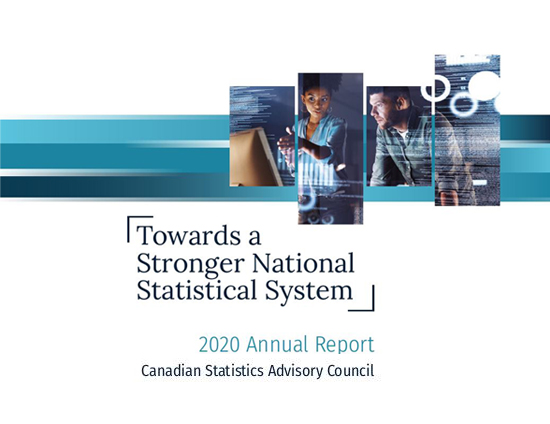



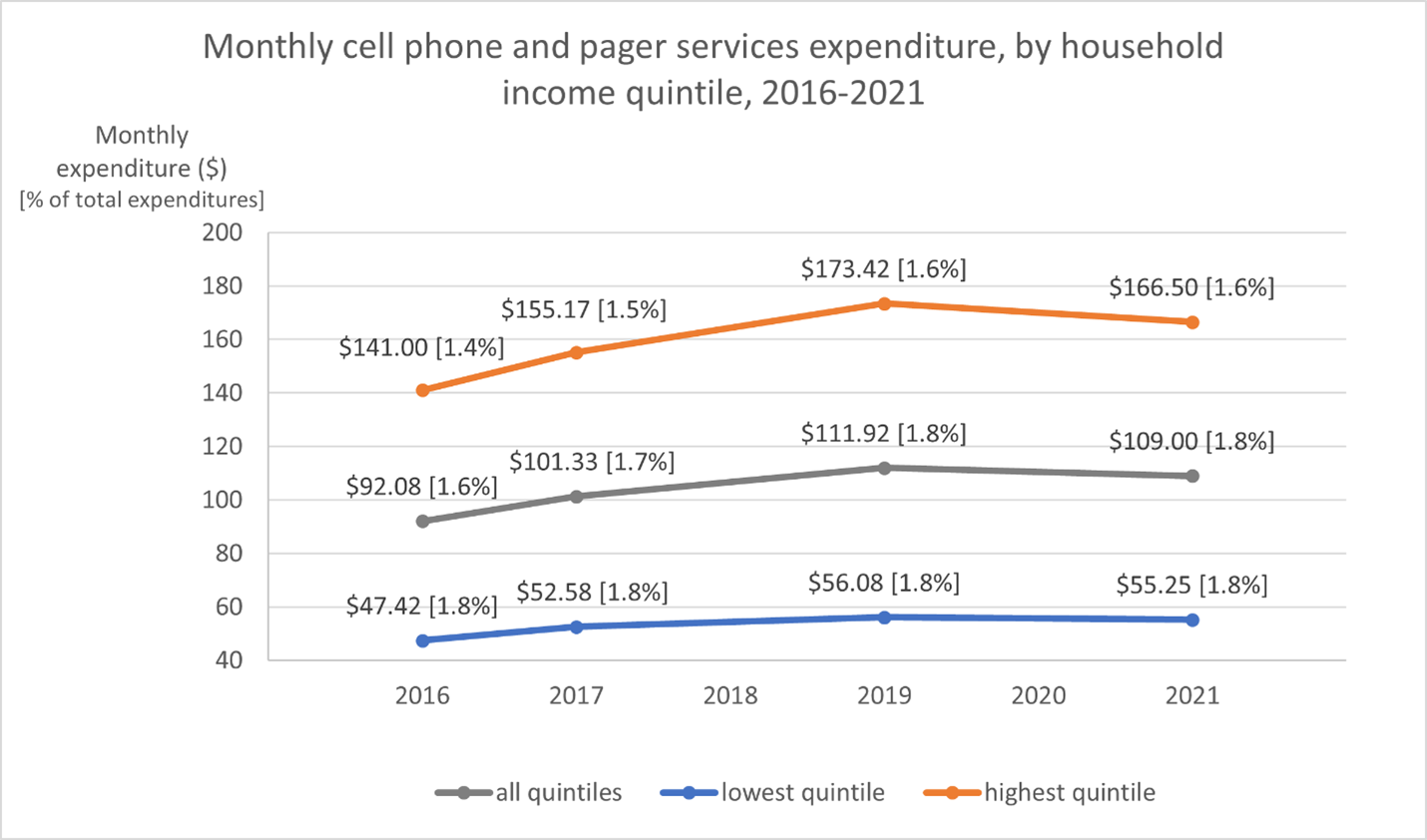


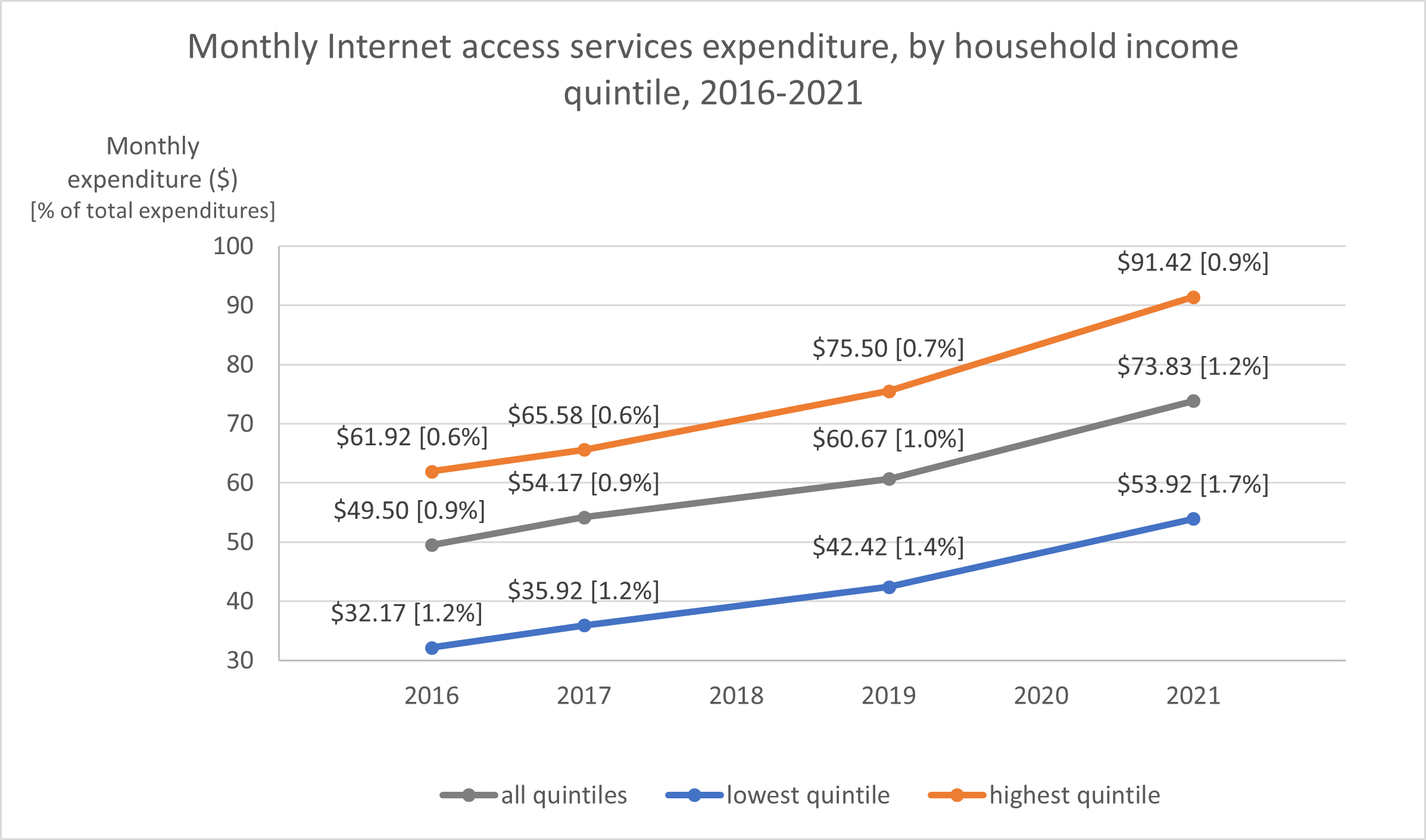


![Number of employees, wired and wireless telecommunications carriers (except satellite) [NAICS - 5173], 2018-2023](/sites/default/files/images/2024-06/subject-telecommunications-indicator-employment-level-2023-eng.png)
